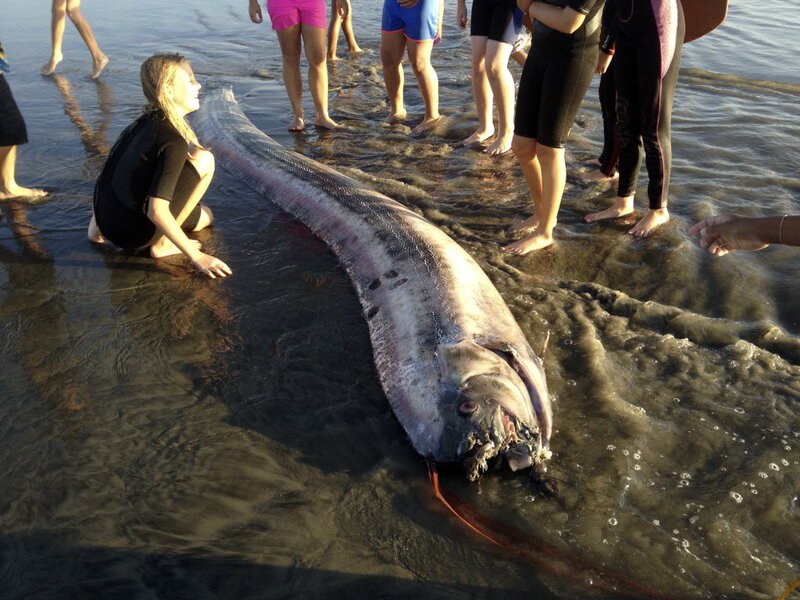California oarfish: Second 'serpent' washes ashore, baffles scientists
Loading...
A rare oarfish has washed up on the California coast for the second time in less than a week, authorities said on Sunday, leaving experts stumped.
The second carcass of the eel-like species was discovered on Friday on a beach in Oceanside, a city police dispatcher said.
The 14-foot (4.3-meter) fish, which has a pug-like face and a skeleton of bone, was found five days after a marine instructor snorkeling off Santa Catalina Island, about 50 miles (80 km) to the west, spotted a dead 18-foot (5.5-meter) oarfish in shallow water.
The back-to-back discoveries of beached oarfish are highly unusual, scientists said. The fish is an elusive creature that dives to depths of 3,000 feet (914 meters) and is thought to have inspired legends of giant sea serpents.
"It may have happened some place on Earth before but it certainly doesn't happen very often," said Milton Love, a research biologist at the University of California in Santa Barbara.
Love is awaiting tissue samples of the larger oarfish that he will pass along for DNA sampling. He suspected the deaths of the two giant creatures were not coincidental and doubted they were linked to human activity.
He speculated the oarfish, who are not strong swimmers, were carried toward shore by a powerful current and then battered to death by strong swells.
"There may be ones lying in 50 to 100 feet (15 to 30 meters) of water we'll never know about," Love said.
The creatures are as thick as a human torso and can grow up to a length of 56 feet (17 meters). They are found in all temperate to tropical waters, but because they dive to great depths they are rarely seen and remain largely unstudied.
Little is known about the behavior or numbers of oarfish, Love said. Scientists are split on whether they constitute one or more species, a division that DNA samples taken from the recently-discovered carcasses could help resolve.
Earlier this year, rare footage was taken of an oarfish swimming near an oil rig in the Gulf of Mexico. The Christian Science Monitor reported: "This serpent seen glowing near the Thunder Horse oil platform, was filmed from an ROV (remotely operated vehicle) in five videos. The researchers,part of the SERPENT Project, a collaboration between Britain's National Oceanography Centre and the oil and gas industry, released the videos along with their paper, which is published in the current issue of the Journal of Fish Biology."
(Editing by Ian Simpson and Paul Simao)







